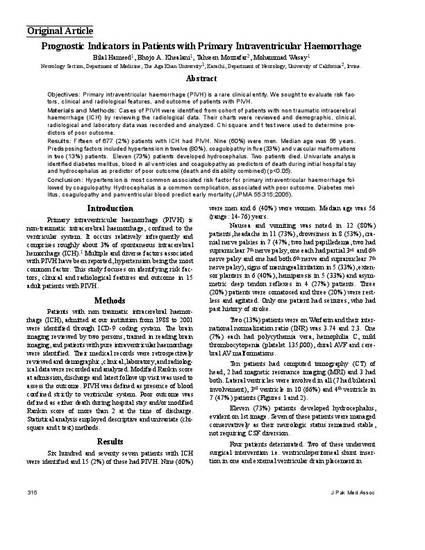
Objectives: Primary intraventricular haemorrhage (PIVH) is a rare clinical entity. We sought to evaluate risk factors, clinical and radiological features, and outcome of patients with PIVH.
Materials and Methods: Cases of PIVH were identified from cohort of patients with non traumatic intracerebral haemorrhage (ICH) by reviewing the radiological data. Their charts were reviewed and demographic, clinical, radiological and laboratory data was recorded and analyzed. Chi square and t test were used to determine predictors of poor outcome.
Results: Fifteen of 677 (2%) patients with ICH had PIVH. Nine (60%) were men. Median age was 56 years. Predisposing factors included hypertension in twelve (80%), coagulopathy in five (33%) and vascular malformations in two (13%) patients. Eleven (73%) patients developed hydrocephalus. Two patients died. Univariate analysis identified diabetes mellitus, blood in all ventricles and coagulopathy as predictors of death during initial hospital stay and hydrocephalus as predictor of poor outcome (death and disability combined) (p<0.05).
Conclusion: Hypertension is most common associated risk factor for primary intraventricular haemorrhage followed by coagulopathy. Hydrocephalus is a common complication, associated with poor outcome. Diabetes mellitus, coagulopathy and panventricular blood predict early mortality
Available at: http://works.bepress.com/mohammad_wasay/20/
